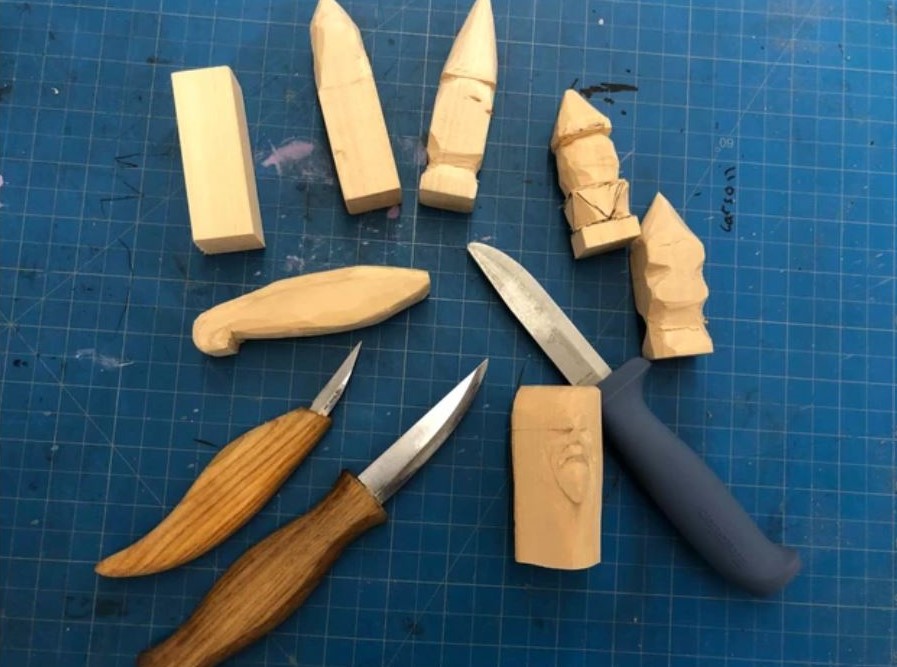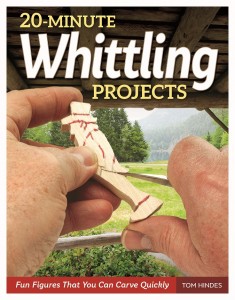
There are many types of wood carving knives available on the market. However, they all have different sizes and shapes. A thicker blade is better than a thinner one. A blade with a curved bottom is the best choice for slicing, as a straight blade will skitter across the wood. A curved bottom is best if you are trying to carve concave surfaces.
Whittling knives with a single blade
A single-blade whittling knives is ideal for carving wood. A whittling blade is designed to create fine details but not make rough cuts. This knife is best used for small projects. If you are trying to carve a large object, this knife will slow you down.
When carving large objects such as logs or larger branches, a high-carbon steel knife is essential. The blade is about 4.4 inches long, making it easy to cut through larger branches and wood pieces. Unlike a carving knife, this single-blade whittling knife comes with a leather sheath for safe storage. This knife is covered by a limited lifetime warranty.
Stainless steel whittling knives
There are many different types of whitling. You should consider your preferences, needs, and the project you are working on. Stainless steel knives are the most common, but a high carbon steel knife is also available. This steel is more durable than stainless steel and can be sharpened much quicker. Avoid using dull or rusted blades for whittling.
The most popular material for whittling knives is carbon steel. It is strong and can hold its edge without any sharpening. This makes it ideal for woodworking. Carbon steel is subject to rusting and frequent maintenance. Stainless Steel, however, doesn't require constant sharpening. Besides being rust-resistant, stainless steel whittling knives are more affordable. A knife made from this material will keep your blade sharp for as long as you can.
Wood carving knives

There are many types and styles of wood carving knives. Although most knives come in standard sizes and shapes, there are some differences like the thickness of the blade. Manufacturers may measure the whole blade from the tip to the handle. Others measure just the cutting edge. There are two options for bottom blades. Curved bottom knives are great for concave cuts, while straight ones will skitter across wood. Here are some tips for choosing a carving knife.
A premium wood handle is a must-have for serious carving. A wood handle will add beauty and character to your carver's tool. Some people may find flat handles uncomfortable, so be sure to invest in a handle that will accommodate your hands. Your hands will curl around your knife's handle eventually. An inlay is also available. You'll be able to use your carving knife with ease once you have it fitted with a good handle.
Lee Ferguson wood carving knives
Lee Ferguson wood carving knives are of high quality. They have rosewood handles and blades made from tool steel. They are elegant and effective, but may be too small for your hand size. The knives are very affordable and can be delivered for free to your residence within the USA. In addition to excellent quality, Lee Ferguson knives are extremely easy to sharpen and maintain. No shipping fees are charged for orders above $99

OCC tools can be used for wood carving. They are available in various sizes and shapes. The Flexcut might be too big for younger whittlers. You can adjust the handle to suit smaller hands. Lee Ferguson Wood Carving Knives are beautiful and come honed out of the box. They are designed to be the perfect tool for wood carving.
FAQ
Do you have the skills to learn woodworking?
You can learn everything best by doing. Woodworking is an art that takes patience, practice, skill and experience. It takes time to master any craft.
It is the best way to learn to do something is to actually do it. So start small and build on what you have learned from there.
What tools work best for me?
It's important to consider your preferences and needs when buying tools. Do you prefer metal or plastic handles? What size screws and nails do you use most often? Are you more comfortable using power tools than hand tools?
Where can you find free woodworking blueprints?
To find free woodworking plans, you don't have to buy any magazines or books. All you need to do is search Google. Enter "free woodworking", and you will see hundreds upon hundreds of websites offering free plans.
What wooden items do you sell well?
These wooden products are the most popular. They were made from sustainably harvested wood.
Maple, cherry, mahogany walnut, teak, mahogany and maple are the most common woods for furniture.
These woods are very strong, but they also have beautiful grain patterns and colors. They also last for many years if cared for properly.
To protect wooden furniture from moisture damage, you should paint it first. This covers all surfaces, drawers included, as well as doors and handles.
If you want to make sure that your furniture lasts as long as possible, then you should choose a paint that is resistant to water.
You should use a high-quality oil-based primer followed by two coats of top coat. It is possible to apply multiple coats depending on how heavy the wear.
Avoid spray cans and aerosol paints. These products are contaminated with solvents, which evaporate rapidly and can leave behind toxic fumes.
How much should a woodworker charge per hour?
The hourly rate of a professional woodworker depends on many factors including experience, skill level, availability, location, etc.
An average hourly rate for skilled woodworkers ranges between $20-$50.
A less skilled woodworker can charge as low at $10 an hour.
What kind of wood should you use?
The most commonly used woods for woodworking are oak, maple, cherry. Each wood type has its own characteristics which affect the final product's appearance and feel. Oak tends to be harder and darker than other woods. Birch is soft and light, and mahogany is denseer and heavier. There are two options: solid wood and veneers. Veneers consist of thin sheets made from wood and glued together to form a single layer.
Statistics
- In 2014, there were just over 237,000 jobs for all woodworkers, with other wood product manufacturing employing 23 percent; wood kitchen cabinets and countertop manufacturing employing 21 percent. (theartcareerproject.com)
- Woodworkers on the lower end of that spectrum, the bottom 10% to be exact, make roughly $24,000 a year, while the top 10% makes $108,000. (zippia.com)
- The best-paid 10 percent make $76,000, while the lowest-paid 10 percent make $34,000. (zippia.com)
- The U.S. Bureau of Labor Statistics (BLS) estimates that the number of jobs for woodworkers will decline by 4% between 2019 and 2029. (indeed.com)
External Links
How To
How to join wood with no nails
Woodworking is a favorite hobby. It is relaxing and enjoyable because you can create something useful with wood. However, there are times when you want to join two pieces of wood together without having to use nails. This article will help you to maintain the beauty of your woodwork projects.
You will first need to trim the edges of your wood pieces before joining them. Do not leave any sharp corners as they could cause problems down in the future. After you have completed this step, you are ready to glue your boards together.
When working with hardwood, glue should be applied only to one side. For softwoods like cedar and pine, glue should be applied to both sides. Apply the glue to the boards and press them down until they are securely attached. Be sure to let the glue dry before you move on to the next step.
After you glue your boards together, drill holes at the joints where screws will be inserted. You can choose the type of screw to determine the size of your holes. For example, if you're going to use a 1/2-inch wood screw, then you should drill a hole that is at least 3/4 inches deep.
After drilling the holes, you can drive the screws into your board's backside. Don't hit the board's surface. You could damage the finish. Avoid hitting the screws' ends too often when driving screws. This will help prevent splitting of the end grain.
Once your project is complete, it's time to protect it against the elements. You can either seal the entire piece of furniture or cover the top. You will want to choose a product that will be durable for many years. Some examples include oil-based varnishes, polyurethane, shellac, lacquer, etc.
These products can generally be found in any home improvement shop. Just make sure that you buy the right kind for the job. Remember that some finishes can be toxic, so you should not use them indoors. Always wear protective gear when handling any of these finishes.